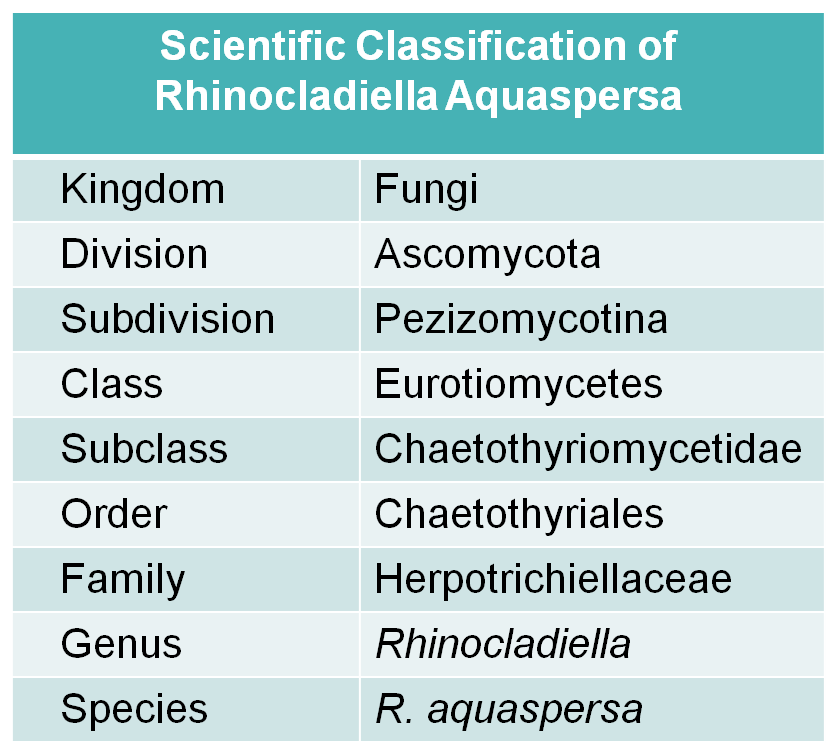Rhinocladiella aquaspersa
As an uncommon etiologic agent of chromoblastomycosis, Rhinocladiella aquaspersa (R. aquaspersa) can also cause chronic granulomatous fungal infection. Absolutely, thorough studies of R. aquaspersa have great benefit for the therapeutic applications of chromoblastomycosis. Employing abundant industry knowledge, Creative Biolabs customizes quality programs and services to fit the client’s needs in the nosogenesis and therapeutic applications of chromoblastomycosis. Now, we will give a brief introduction to R. aquaspersa here.
Background of Rhinocladiella Aquaspersa
R. aquaspersa belongs to the genus Rhinocladiella, which comprises of about 12 species, with five species of great medical interest including R. aquaspersa, R. atrovirens, R. basitona, R. mackenziei (formerly Ramichloridium mackenziei), and R. similis. The infections caused by species of Rhinocladiella are clinically diverse. R. aquaspersa is a melanized fungus that causes human chromoblastomycosis with extremely rare incidence. There are three morphological forms of this fungus, namely conidia, mycelia, and sclerotic bodies. R. mackenziei is one frequently neurotropic organism that causes fatal brain lesions, mostly in patients who are immunocompromised or suffered from underlying metabolic diseases. It is notable that R. aquaspersa infection is associated with skin, while R. mackenziei causes brain infections in otherwise healthy individuals and leads to high mortality.
 Fig.1 Scientific classification of R. aquaspersa.
Fig.1 Scientific classification of R. aquaspersa.
Distribution of Rhinocladiella Aquaspersa
Like other etiologic agents of chromoblastomycosis, R. aquaspersa is also predominantly distributed in the hot and arid climates of temperate and tropical regions. Decaying plant material, wet soil, and rotten wood are its best-loved habitats. The chaetothyrialean fungus R. aquaspersa is a rare cause of chromoblastomycosis with cases generally confined to Latin America, such as Brazil and Venezuela.
Pathogenesis of Rhinocladiella Aquaspersa
The most well-known disease caused by R. aquaspersa is chromoblastomycosis, a tropical and subtropical skin disease caused by environmental accidental inoculation of pathogenic fungi. The people suffered from chromoblastomycosis usually present a chronic granulomatous infection characterized by muriform cells, tissue proliferation, and microabscess, which may cause several complications to the health of affected individuals. It is mentionable that the muriform cells in granulomatous lesions have been the hallmark of chromoblastomycosis via mycological and histopathological investigation of exudates and biopsy tissue samples. The R. aquaspersa caused cases of chromoblastomycosis prompted a hot study of the clinical spectrum of this novel fungus, based on strains verified by sequencing and analysis of infections caused by related species.
Research Progresses of Rhinocladiella Aquaspersa
The studies of R. aquaspersa are very limited and the factors involved in the virulence are poorly understood, but it is documented that three morphological forms (conidia, mycelia, and sclerotic bodies) of R. aquaspersa can be investigated of surface phosphatase activity, which is involved in fungal adhesive properties. The attachment of R. aquaspersa to epithelial cells can be reversed by the pre-treatment of the conidia with orthovanadate, molybdate and anti-phosphatase antibody. In addition, R. aquaspersa infection can induce complement-mediated phagocytosis.
With accumulated experience in antifungal drug discovery, Creative Biolabs can offer valuable suggestions and reliable services to support your study of R. aquaspersa. It is our commitment to treat each client as an individual and strive to give the best possible service at an exceptional value. If you have any questions, please feel free to contact us for more details.
For Research Use Only.
